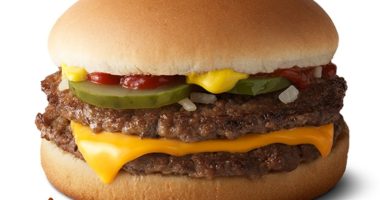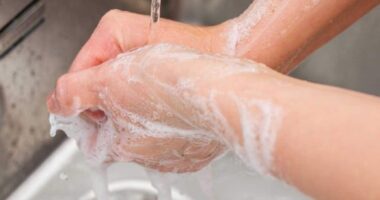#WaterTok is a viral trend on TikTok that involves flavoring and enhancing the appearance of plain water to make it more enjoyable to drink. Creators on TikTok share their unique water recipes, often using sugar-free syrups, powdered flavorings, fruit infusions, and colorful decorations. The trend has gained popularity as a way to encourage people to stay hydrated, especially those who find plain water unappealing.
While #WaterTok has been praised for its potential to increase water consumption, it has also sparked controversy among health experts. Some concerns include:
Potential for added sugars and artificial ingredients: Some of the flavorings used in WaterTok recipes may contain added sugars or artificial sweeteners, which can contribute to weight gain, increase the risk of type 2 diabetes, and negatively impact overall health.
Replacing meals with water: Some individuals may replace meals with flavored water, leading to nutrient deficiencies and unhealthy eating habits.
Misconceptions about hydration and weight loss: Some WaterTok videos may promote the idea that flavored water is more hydrating than plain water or that it can aid in weight loss. However, water is water, and its hydrating properties remain the same regardless of added flavors.
Overall, WaterTok can be a positive way to encourage hydration, especially for those who struggle to drink enough plain water. However, it’s important to be mindful of the ingredients used and to avoid replacing meals with flavored water. Consulting with a registered dietitian or healthcare provider can help ensure that you’re staying hydrated in a healthy and balanced way. Next don’t miss to read: Drinking Lettuce Water to Fall Asleep Faster? People Say It Works
Benefits of #Watertok: What you will gain if you’re to participate
The WaterTok trend has gained popularity for its potential to increase water consumption, especially among those who find plain water unappealing. Here are some of the potential benefits of WaterTok:
Increased hydration: By making water more flavorful and visually appealing, WaterTok can encourage people to drink more water throughout the day. Adequate hydration is essential for maintaining overall health and well-being.
Reduced consumption of sugary drinks: WaterTok recipes often use sugar-free flavorings and natural sweeteners, which can be a healthier alternative to sugary drinks like sodas and juices. This can help reduce sugar intake and lower the risk of weight gain, type 2 diabetes, and other health problems.
Improved nutrient intake: Some #WaterTok recipes incorporate fruits, vegetables, and herbs, adding essential vitamins, minerals, and antioxidants to the drink. This can provide additional nutritional benefits beyond just hydration.
Enhanced creativity and personalization: WaterTok allows for creativity and personalization, enabling individuals to experiment with different flavors, ingredients, and presentation styles to find combinations they enjoy.
Fun and engaging approach to hydration: #WaterTok presents a fun and engaging way to approach hydration, making it more enjoyable and less of a chore. This can be particularly beneficial for individuals who find plain water bland or unappealing.
Community and support: The @WaterTok community on social media platforms provides a sense of support and encouragement, motivating individuals to stay hydrated and make healthier beverage choices.
While #WaterTok offers potential benefits, it’s important to approach the trend with caution and moderation. Consult a registered dietitian or healthcare provider to ensure you’re staying hydrated in a healthy and balanced way.
Implication: In this challenge, can one overdrink water?
Yes, it is possible to overdrink water, a condition known as water intoxication or hyponatremia. This occurs when the body takes in more water than it can eliminate, leading to an imbalance of electrolytes, particularly sodium. Symptoms of water intoxication can include:
- Nausea and vomiting
- Headache
- Fatigue
- Confusion
- Muscle weakness or cramps
- Seizures
- Coma
In severe cases, water intoxication can be fatal. It is important to note that water intoxication is more likely to occur in people who engage in prolonged exercise or endurance sports without consuming adequate electrolytes. These individuals may sweat profusely, losing electrolytes in the process. If they replenish with only water, they may not replace the lost electrolytes, leading to water intoxication.
Here are some tips to avoid overdrinking water:
- Drink water throughout the day, but avoid guzzling large amounts at once.
- Listen to your body’s thirst cues. Drink when you are thirsty, but don’t force yourself to drink if you are not.
- If you are engaging in prolonged exercise or endurance sports, consume drinks that contain electrolytes, such as sports drinks or coconut water.
- Monitor your urine output. If your urine is clear and pale, you are likely well-hydrated. If your urine is dark yellow or amber, you may need to drink more fluids.
#Watertok: Warning issued by experts on the trend
Health experts have warned that the #watertok trend could be dangerous. The trend, which has been seen under the hashtag #WaterTok, has led to a surge in popularity for products such as Mio and Crystal Light. These products are often marketed as a healthy way to increase water intake.
However, experts have warned that these products can be high in sugar and artificial ingredients. They say that this could lead to weight gain, tooth decay, and other health problems.
The British Dietetic Association (BDA) has said that it is “concerned” about the trend. The BDA says that it is important to get enough fluids, but that water is the best way to do this.
A post shows that The BDA has also warned that adding sweet-flavoured powders and syrups to water could make it harder for people to tell when they are thirsty. This could lead to dehydration.
The Centers for Disease Control and Prevention (CDC) says that the average adult needs to drink about 15.5 cups (3.7 liters) of fluids per day. However, the CDC says that this amount can vary depending on factors such as age, sex, activity level, and climate.
The CDC recommends that people get most of their fluids from water. However, the CDC says that other beverages, such as unsweetened tea, coffee, and juice, can also count towards daily fluid intake.
The CDC also recommends that people eat fruits and vegetables that are high in water content, such as watermelon, cucumbers, and spinach.
If you are concerned about your fluid intake, you should talk to your doctor. Your doctor can help you to create a personalized plan to stay hydrated.
How much water should you drink?
The amount of water you should drink each day depends on several factors, including your age, sex, activity level, environment, and overall health. However, the general guidelines for daily water intake are as follows:
Adults: About 15.5 cups (3.7 liters) of fluids a day for men and about 11.5 cups (2.7 liters) of fluids a day for women.
Children: The amount of water children need varies depending on their age and activity level. However, the general recommendation is for children to drink 4-8 cups (0.95-1.9 liters) of fluids a day.
Pregnant or breastfeeding women: Pregnant women need to drink about 10 cups (2.3 liters) of fluids a day, and breastfeeding women need about 12 cups (2.8 liters) of fluids a day.
These are just general guidelines, and your individual needs may vary. The best way to know if you’re drinking enough water is to pay attention to your thirst cues. If you feel thirsty, drink water. You should also urinate regularly and have clear or light yellow urine.
Here are some additional tips for staying hydrated:
- Keep a water bottle with you at all times and sip on it throughout the day.
- Drink water before, during, and after exercise.
- Eat plenty of fruits and vegetables, which contain water.
- Avoid sugary drinks, which can dehydrate you.
If you have any concerns about your water intake, talk to your doctor. They can help you determine how much water you need and how to stay hydrated properly.
RELATED: What Happens To Your Body When You Drink 8 Glasses of Water Every Day
Do you know your fluid requirements?
Generally, the National Institute of Medicine recommends that men consume 3.4 L of fluid daily and women consume 2.7 L/day. Beverages and all fluid-containing foods contribute to your total intake.
Here are some examples of fluid-containing foods:
Sauces and gravies: These are often made with water or broth, so they can add a significant amount of fluid to your diet.
Thick smoothies: Smoothies are a great way to get extra fruits and vegetables into your diet, and they can also be a good source of fluids.
Ice creams: Ice cream may not seem like a hydrating food, but it actually contains about 60% water.
Puddings: Pudding is another dessert that is surprisingly hydrating. It is made with milk and eggs, which are both good sources of fluids.
Watermelon and other juicy fruits: Juicy fruits, such as watermelon, cantaloupe, and grapes, are a great way to stay hydrated. They are also a good source of vitamins and minerals.
Jell-O: Jell-O is made with water and gelatin, so it is a good source of fluids. It is also a fun and easy way to get extra hydration.
Soup: Soup is a hydrating and nutritious meal. It is made with water or broth, and it can also contain vegetables, meat, and grains.
Yogurt: Yogurt is a good source of calcium and protein, and it can also be a good source of fluids. It is made with milk, which is a good source of water.
Water should be your primary source of hydration, but your diet can still contribute to your total fluid intake. Aim to drink plenty of water throughout the day, and eat plenty of fluid-containing foods.
What happens when you don’t drink enough water?
Water is essential for life, and when you don’t drink enough of it, you can experience a range of symptoms, from mild to severe. Here are some of the things that can happen when you don’t drink enough water (dehydration):
Mild dehydration: The first signs of dehydration are usually thirst, dry mouth, and fatigue. You may also experience headache, dizziness, and constipation.
Moderate dehydration: If you don’t drink fluids to replace the fluids you’re losing, you can become moderately dehydrated. This can lead to more severe symptoms, such as muscle cramps, rapid heartbeat, and dark urine.
Severe dehydration: Severe dehydration is a medical emergency that can be life-threatening. Symptoms of severe dehydration include confusion, seizures, and coma.
Other health problems: Dehydration can also lead to other health problems, such as kidney stones, urinary tract infections, and heat stroke.








